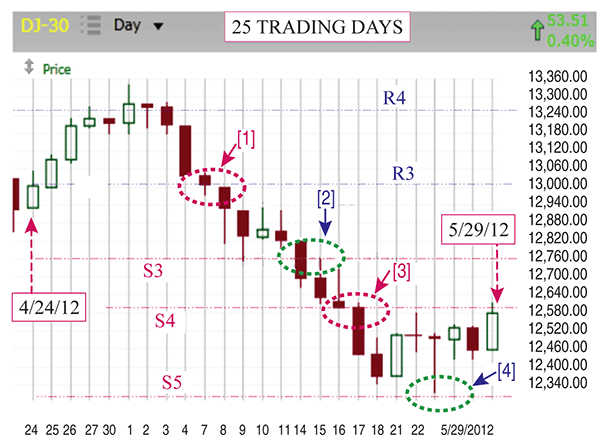TRADING SYSTEMS
Trading In Multiple Time Frames
Here’s how you can use camarilla points to trade in multiple time frames.
Pivot points are a common trading tool, especially among floor traders. Camarilla points are similar to pivot points, but there are some differences. The concept is based on the assumption that markets fluctuate about a point of balance (referred to as a pivot). Eight basic points (levels of prices) are calculated by camarilla formulas for a time frame of interest. The inputs are the previous trading session’s high, low, and close for the time frame you choose.
Camarilla points are best suited for range trading, but are ill suited for trading runaway breakouts. I will provide examples of such situations later on. The backtesting of trading strategies based on the application of camarilla points shows that the time of exposure to risk created by market uncertainties is reduced.
In this article I will show you how to apply the camarilla points to your trading on various time frames. “S” stands for “support” and “R” stands for “resistance”:
Most price congestion is going to happen in these support and resistance areas. The levels important in trading breakouts are R4 in conjunction with R5, and S4 in conjunction with S5. However, breakouts more often than not are better handled when using Elliott wave analysis (wave count).

FIGURE 1: 25-DAY TIME FRAME. Here, [1] and [3] represent sell signals and [2] and [4] represent buy signals